Wow. Just wow. I don’t know why I never paid a visit to this astounding place before now!






























































And, last, but certainly not least, you don’t see a lot of elephants in Italian art, but here is a big exception to the rule.


Wow. Just wow. I don’t know why I never paid a visit to this astounding place before now!






























































And, last, but certainly not least, you don’t see a lot of elephants in Italian art, but here is a big exception to the rule.


Yikes! Nothing like being met by an army! The outstanding collection of armor below is just one of the many parts of the Poldi Pezzoli Museum that will amaze you in Milan.


The Poldi Pezzoli Museum is housed in the original 19th-century mansion built by Milanese aristocrat, Gian Giacomo Poldi Pezzoli (1822-1879). His parents and grandparents had already begun the family’s art collection and he built his palazzo in this tony section of Milan to house the collection it as he continued to enlarge it. When he died, he left his collection and house to the Brera Academy. The Poldi Pezzoli Museum was opened to the public in 1881 on the occasion of the National Exposition in Milan and has since become an archetype for other famous collectors.


The Poldi Pezzoli is one of the most important and famous house-museums in the world. Located near the landmark Teatro La Scala and the world-renowned fashion district, this house-museum is beloved by the Milanese and international public.
The Poldi Pezzoli is a member of the Circuit of Historic House Museums of Milan, a city network established in 2008 with the aim of promoting the Milanese cultural and artistic heritage.
During World War II, the museum was severely damaged and many paintings were completely destroyed. The palazzo itself was rebuilt and in 1951 it was reopened to the public.
Not all of the house was restored as it appeared during Poldi Pezzoli’s life, but it was instead fitted out as a museum. The grand entryway, with its fountain filled with koi and its spiral staircase are original, as are at least 2 of the piano nobile galleries. You’ll recognize them right away in the pictures below.
The outstanding collection includes objects from the medieval period to the 19th century, with the famous armor, Old Master paintings, sculptures, carpets, lace and embroidery, jewels, porcelain, glass, furniture, sundials and clocks: over 5000 extraordinary pieces.
Let’s begin at the entry way. What a greeting!


Below: the view of the fountain from atop the staircase:


I was a bit obsessed by the fountain; can you tell?
Allora, moving on:






Angels in the architecture:

Dragons on the pottery:
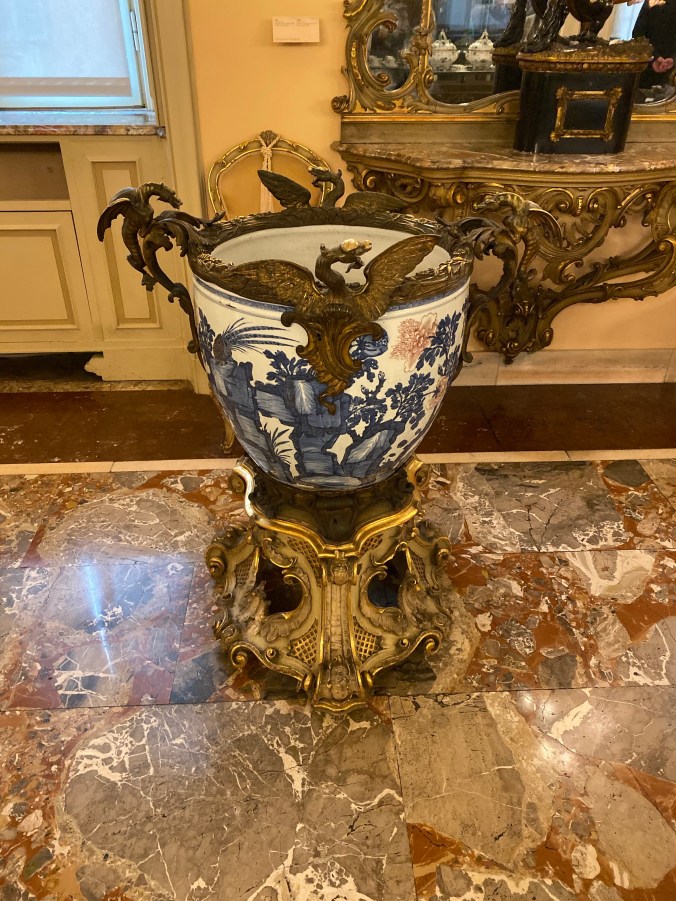


I love the way they display the ceramics: why not affix objets to the ceiling? It is a wasted flat space otherwise. Genius.


Moving on to the important objets: Piero del Pollaiuolo magnificent Portrait of a Young Lady.

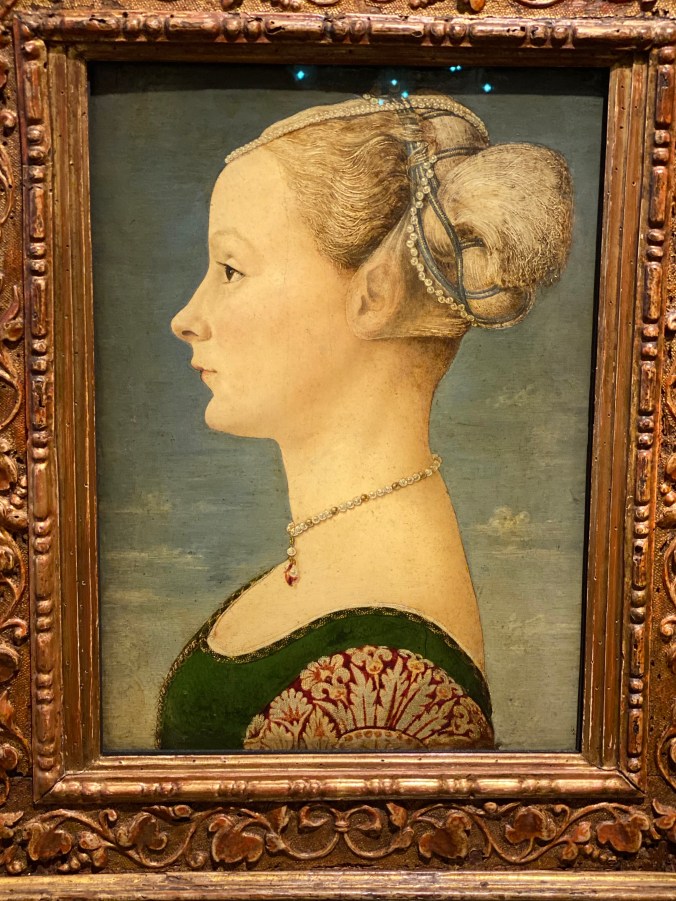

Botticelli’s The Dead Christ Mourned:


Bellini:







Ah, the glass. It gets me every time:








The panel below made me laugh. I love how the sculptor included the slippers at the side of the bed! In this dastardly scene of homicide, don’t forget the slippers!
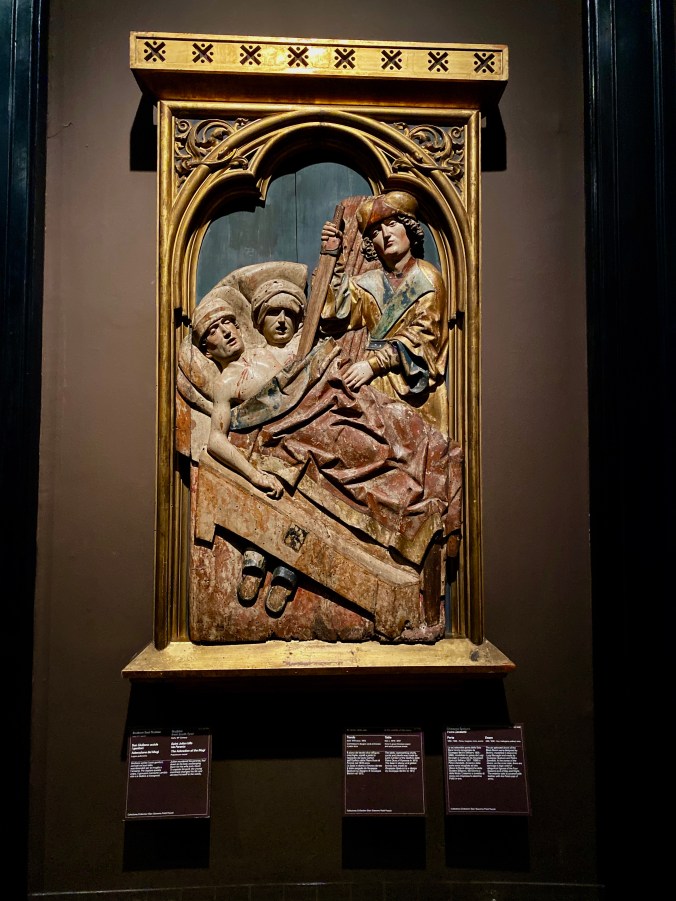


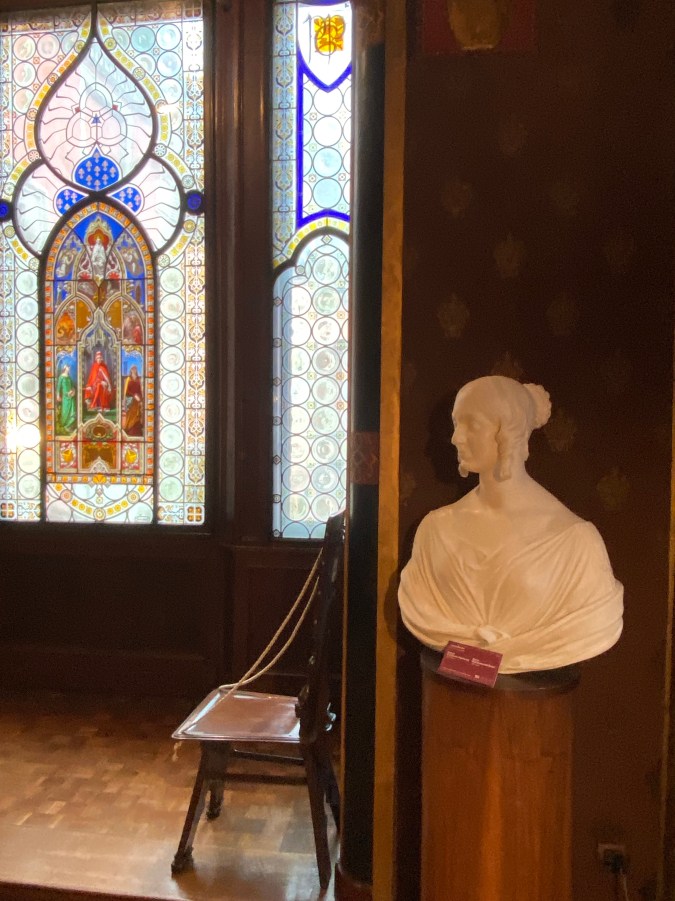









Since 2019 marks the 500th anniversary of Leonardo da Vinci’s death, the world is paying homage to the great artist with myriad exhibitions. The Poldi Pezzoli joins them with a major painting, on loan from the Russian Hermitage Museum, just for the occasion. Leonardo painted this work during his time living in Milan.






Milano’s beautiful Palazzo di Brera was created along with the Accademia di Belle Arti in 1776 to serve the students studying at the University.
The Jesuits built the Baroque palace at the end of the 17th century as a convent (the word convent is used for monasteries in Italy). After they were unceremoniously expelled, the Palazzo Brera was remodeled in the neoclassical style.
Napoleon took control of Italy and declared Milan the capital. He filled the Brera with works from across the territory. As a result, it is one of the few museums in Italy that wasn’t formed from private collections, but rather by the Italian state.



When the Palazzo di Brera was taken away from the Jesuits by Queen Maria Teresa of Austria, it was meant to become one of the most advanced cultural institutions in Milan. It still lives up to that status today. Besides the Academy and the beautiful Art Gallery, the palazzo holds the Lombard Institute of Science and Literature, the Braidense National Library, the Astronomical Observatory and a Botanical Garden maintained since he 1700s.
Inside the cortile, Canova’s heroic statue of Napoleon:

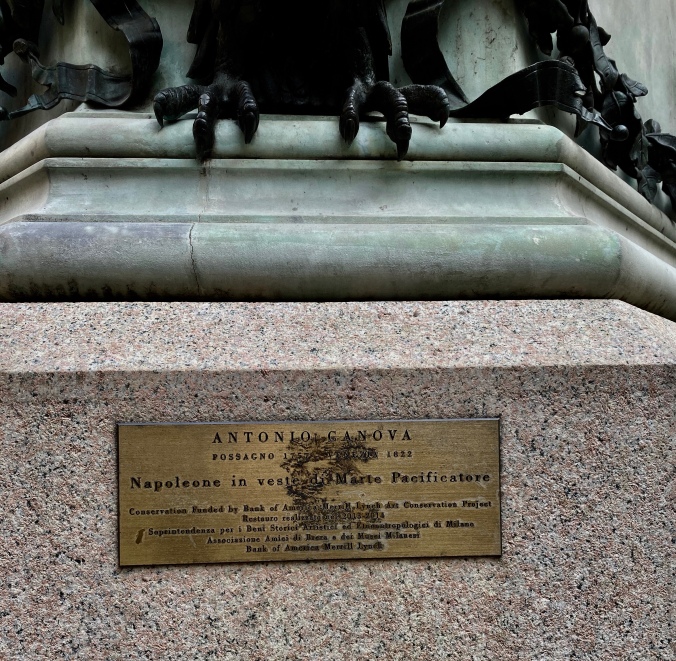

The entrance to the palazzo:


There is a garden at the back of the palazzo. The fortified walls and turrets of the building complex seen back here are massive and medieval, and very unlike the sophisticated facade of the palazzo. This Orto Botanico comprises a tiny corner of the hectic city has aromatic herbs, wildflowers and a small vegetable garden for research.




The Palazzo di Brera started life as a Jesuit college built on green land just outside the old city walls and its name reflects the location. In fact, the district, palace, and gallery all take their names directly from their locale as the Medieval dialect. The word “brayda” means “grassy clearing”. The word slowly evolved into “brera” or “bra;” it is also the root word of Vernona’s Piazza Bra.
Inside the Palazzo di Brera resides the beautiful Biblioteca Braidense:



More about Canova’s statue of Napoleon:

The plaster model for the bronze statue:



What caught my eye at the Brera? These works:
Andrea Solario, Madonna of the Carnations:



I loved Carlo Crivelli’s amazing panel paintings, which are actually somewhat 3-d. I’ve not seen that before in paintings of these kinds:





Another luscious work by Carlo Crivelli: Madonna and Child.



Some of the altarpieces in the Brera collection are sumptuously beautiful; breathtaking, actually.
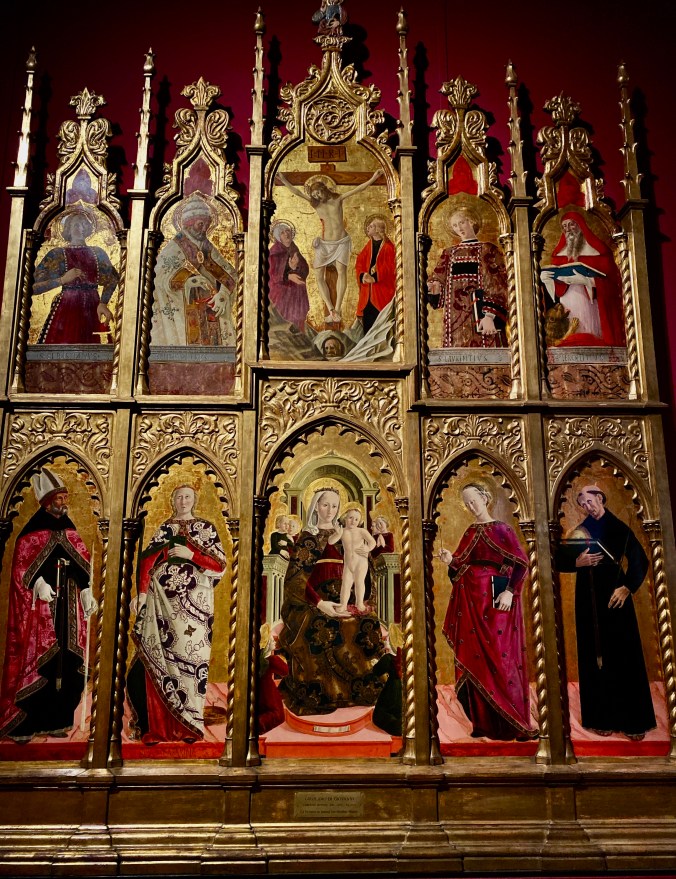

This random lion caught my eye and I don’t even remember from what painting! I was a bit agog at the Brera. I started feeling the Stendhal syndrome, big time.

Raphael:



Piero della Francesca:



A ubiquitous scene, all over Europe:


This lovely church is best-known for its attached convent refectory. You know, that little old thing known as the Last Supper and painted by Leonardo da Vinci.
The church is beautiful in its own right:









Wishing you a happy Christmas from a world famous capital of fashion, Milan!





















Dear Fellow Former Met Girl,
So, I think you will enjoy this. I had a ticket to visit the Last Supper for 15 minutes on Wednesday at 5 pm. That’s how they do it nowadays. You buy your ticket online if you want to be sure to get in. No more dropping by anything interesting in Italy anymore; sure, you can try, but you will most likely be disappointed.
My visits to the Scrovegni Chapel were 20 minutes long. Didn’t realize I was spoiled with that!
Anyhoo, I have a new iPhone and it has a mind of its own. Typically when I take a video, the light doesn’t come on. So, I was making a video of the last supper when I heard this screeching coming from somewhere in the refectory. I knew right away somebody had made a faux-pas.
I kept filming until I realized, when 2 Italian matrons were bum-rushing me, that the faux pas was mine. My camera light was on and that was a huge no- no.
I turned off my camera and apologized profusely, explaining that I didn’t know the light was on. Finally they stood down, but only after telling me I had to delete the video. I promised to do so and acted like I was.
But, I kept it and here it is for all the world to enjoy!
This is how a former Met girl goes to Milan. Just like a bronze foundry in Brooklyn!
xx, L


I got to enjoy a few days in Milan this week and here are some random pictures of things that caught my eye. Some are just fun, some are quite lovely!


Milan has a lot of stunning architecture:



Italy has an endless kaleidoscope of decorative iron work:

I was happy to learn that Santa really exists!






Aww….Merry Christmas!


Hello, Leo! Everyone is celebrating the 500th anniversary of your death this year! Gone but not forgotten.

In Milan, college graduates wear the corona too. Auguri, young scholar!


Galleria Vittorio Emanuele II, you are ever so lovely:





My vote for prettiest antique bakery goes to Pasticceria Marchesi, founded in 1824. I love anything from this shop (and I think there is a little something something from here under my tree at home?).

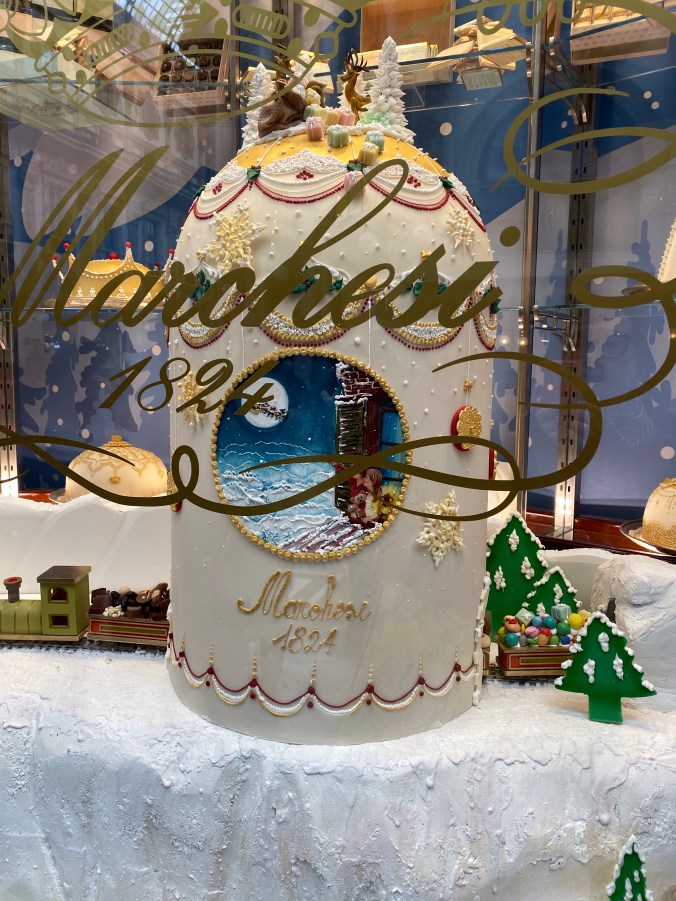

Piazza del Duomo:



Other places:


T’is the season:



From the grand train station, one of the most impressive in the world:

On a recent trip to Milan to visit some museums (I avoid them during the high season, as I like to enjoy my art without crowds), I enjoyed many random bits of holiday time throughout the city.
Milan is apparently planning on having a super Christmas this year:

I enjoyed the following billboard that reassures us that Father Christmas is real (at least if you have an iPhone 11 with Iliad):





The famous pastry shop, Marchesi, founded in 1824, has wonderful windows:





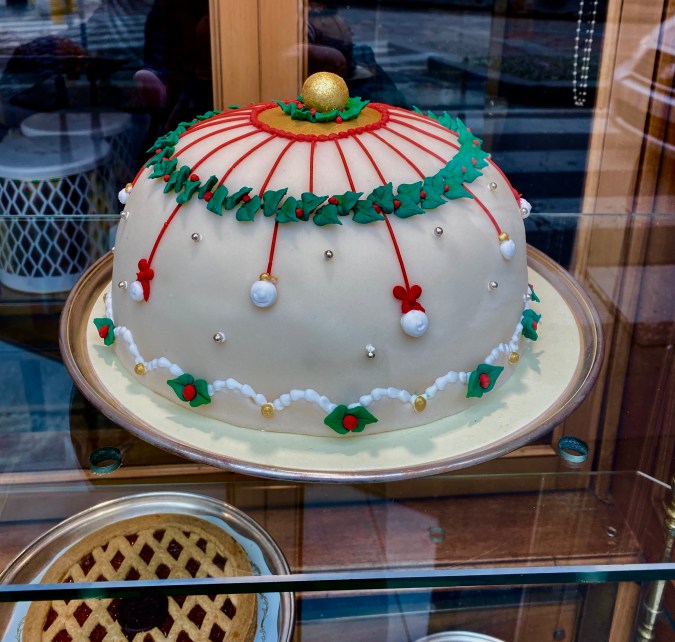
The Marchesi building is a quaint affair on a major thoroughfare.


Scenes like the one below are fun to spot throughout the city:


And the warm glow from an old-style paper store on a cold winter evening is a lovely sight:

I visit a lot of churches (looking for art), and while most have a creche scene, very few are decorated like this one in Milan. It is Santa Maria delle Grazie, the church attached to the convent rectory with that famous scene of a last supper….

And, on the train ride home from Milan, I saw snow! The first I’ve seen this year!

You must be logged in to post a comment.